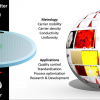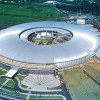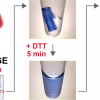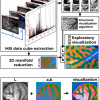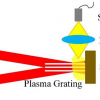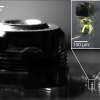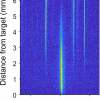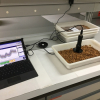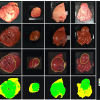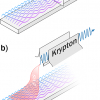Spectroscopy News
Professor John Mallard played a crucial role in the development of two of the world’s most important medical technologies: magnetic resonance imaging and nuclear medicine imaging.
A grant for a new integrated femtosecond laser ablation and laser induced breakdown spectroscopy system has been made to UK scientists to allow them to understand how the Earth works and how it’s changing.
Stress caused by soil bacteria can have a positive effect on plants and Raman spectroscopy is being used to help study this.
Graphene Flagship researchers have developed a new measurement standard for the analysis of graphene and layered materials that could accelerate production and optimise device fabrication.
Pfeiffer Vacuum has supplied a number of vacuum pumps and other products for Brazil’s synchrotron.
Debris from depleted uranium munitions used in the Gulf War has long been blamed for contributing to the illness of hundreds of thousands of veterans, but new research using ICP-MS proves it is not the cause.
Forced to consider new research opportunities due to lockdown restrictions, researchers from the Physics department of the Politecnico di Milano developed an innovative connection between the field of artificial intelligence and non-linear optics.
A novel gel electrophoresis technique has reduced the time for the sample pretreatment of trace marker proteins derived from clinical samples from around 20 to 5 hours.
Scientists from the Skolkovo Institute of Science and Technology (Skoltech) have proposed a mass spectrometry imaging (MSI) method making use of the unique features of human vision.
Quantum cascade laser absorption spectroscopy can identify nitrous oxide molecules containing two rare isotopes of nitrogen and oxygen.
Plasma-grating-induced breakdown spectroscopy can overcome limitations inherent in other LIBS techniques, and enhance signal intensity by more than three times.
Scientists from the University of Stuttgart report on the construction and performance of a µm-sized spectrometer: far smaller than a smartphone camera!
A new study reports an optimised approach to using laser-induced breakdown spectroscopy for analysing hydrogen isotopes. The new findings could enable improved rapid identification and measurement of hydrogen and other light isotopes that are important in nuclear reactor materials and other applications.
Curling wands and flat irons can damage the keratin proteins that make up about 85% of our hair, now the process can be observed as it happens with synchrotron vacuum-UV radiation.
Portable NIR technology can quantify the levels of amygdalin, the compound responsible for the bitter taste of almonds, on an industrial scale.
Near infrared hyperspectral imaging combined with machine learning can differentiate cancerous and normal tissue in tumours in deep tissue and covered by a mucosal layer.
A major advance in brain tumour diagnosis made by a research team from UK institutions using infrared spectroscopy at Diamond is highlighted in a short video.
Kanazawa University scientists have used computer simulations of charged molecules to help improve the accuracy of mass spectrometers. By understanding the collisions between ions that reduce excess charges, this work may lead to more sensitive radiocarbon dating and medical testing.
Researchers have developed a method to modify the spectral width of extreme-ultraviolet light. By employing a novel phase-matching scheme in four-wave mixing, they can compress the spectral width of the initial broadband light by more than hundred times.
A research project at the Institute for Global Food Security, Queen’s University Belfast is to use mass spectrometry to tackle bovine mastitis and reduce the use of broad-spectrum antibiotics on dairy farms.




